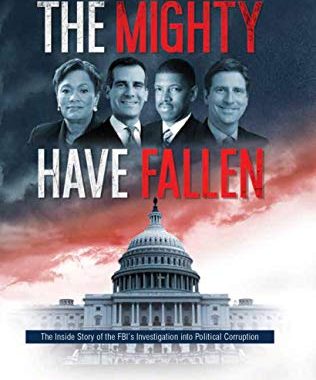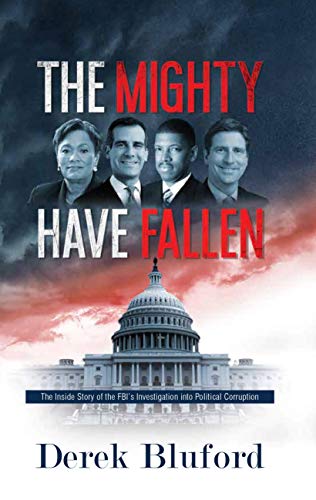What is your worst nightmare? Blowing a statute of limitations? Losing a huge case at trial and the verdict is upheld on appeal? What about being sued for malpractice for policy limits and beyond?
These are all possible horribles, but I think what’s worse is the cratering of your career based on your own stupid, thoughtless, and/or arrogant conduct. This applies to both lawyers and judges.
I do not understand (and probably never will) how a judge or a lawyer can wittingly or otherwise trash his career and reputation. After spending years in the trenches, getting appointed to the bench is a big deal and should be regarded as such, but what on earth possesses them to think they get a “good conduct” medal for conduct unbecoming? Similarly, passing the bar is not an easy task, neither is developing a practice or a reputation.
I am surprised that judges don’t learn not to diss the district attorney. Whatever disagreements there may be, judges need to understand that the D.A. has a job to do that is different from the court’s. (Why this wasn’t learned years ago is beyond me. Executive branch v. judicial branch. We could probably all use a civics refresher course these days.)
California’s Commission on Judicial Performance stipulated with Nevada County Superior Court Robert Tamietti that in exchange for a public admonishment for misconduct and discourteous comments made about the D.A., Tamietti agreed to retire from the bench and to never seek judicial office again. All that hard work down the tubes.
While scrolling through the list of judicial officers that have been disciplined by the commission over the years, I saw the name of a judge who had received several public admonishments before retirement. He was a nasty, belittling, sarcastic judge. No one wanted to appear in front of him. And if attorneys wanted to exercise a peremptory challenge against another judge, the fear was that the case would be reassigned to this judicial officer. (One peremptory and done.)
This judge did not hatch as a judge; he was a lawyer first, and the lack of understanding and empathy to practitioners was astonishing. I sat in his courtroom, shocked and appalled, while he trashed just about every lawyer appearing in front of him. Shame on all of us that it took so long for him for him to be publicly disciplined and then retire. The most egregious case of robe-itis I ever saw. Here’s the dilemma: do you complain about judicial misconduct and fear retaliation or do you (and your client) suffer in silence?
I digress. I think social media is dangerous for judges who are supposed to be neutral, at least that’s what we’re paying them for. A Tennessee judge has been reprimanded for “flirtatious and overtly sexual messages” sent on social media to a number of women. Some of the messages were accompanied by a photo of the judge in his judicial robe. Several recipients of the messages were female lawyers who had cases pending before this court. What was that judge thinking? The lessons learned? Don’t send such messages (a no-brainer) and don’t do anything that might compromise judicial neutrality (another no-brainer). Isn’t the essence of what judges are supposed to do, i.e., to be neutral?
Another Tennessee judge has been reprimanded for comments about masks. The judge used the term “grand wizard” when referring to the chief justice of the Tennessee Supreme Court who had imposed a mask mandate in court.
In addition to neutrality, the conduct of judges should be above reproach. Sometimes it isn’t. A long-serving judge on the Washington D.C. Superior Court retired three days after the Washington Post asked him about long-ago sexual assaults on a 16-year-old daughter of friends of his. Those assaults continued for some time.
Here’s a classic case of overbearing judicial conduct. A neighborhood squabble escalated with a bare-chested judge trying to push his weight around against the police who were called to the scene.
What do you think? Do you think judges are “entitled” to special treatment? Robe-itis personified, and he wasn’t even wearing his robe.
Several recent lawyer escapades pose again the age-old question of “what were they thinking?” Women lawyers and judges do not seem to need to answer that question.
Name-calling reached new highs (or new lows) when the Ohio Supreme Court suspended a lawyer for what the court called “over the top” criticisms of opposing counsel and disparaging remarks about judicial decisions, including a custody order that the lawyer called the “most insane” order in all his years as an attorney.
The test, the court said, was not how the attorney viewed the rulings, but his conduct in hotly contested litigation and how he responded to adverse rulings. Before the attorney can be reinstated, the attorney must be evaluated by the Ohio Lawyers Legal Assistance Program. Good idea to have him evaluated before returning him to the general lawyer population.
We have heard about driving while drunk, but how about driving while naked? The bare truth? (Sorry, I couldn’t resist.) This attorney had a history of driving while nude. The Ohio Supreme Court imposed a two-year suspension, but stayed it, with terms and conditions imposed. The court found that no clients were injured by the attorney’s conduct. I wonder if he has ever zoomed while naked.
An Indiana attorney, with five drunk driving arrests, was suspended for 180 days. Five previous drunk driving arrests? Is this the first time the Indiana bar took notice? What took so long?
Word limitations preclude other examples. However, I would be remiss if I didn’t say two words: Jeffrey Toobin. What was he thinking? Moral of his story? Or should I say morals of his story?
 Jill Switzer has been an active member of the State Bar of California for over 40 years. She remembers practicing law in a kinder, gentler time. She’s had a diverse legal career, including stints as a deputy district attorney, a solo practice, and several senior in-house gigs. She now mediates full-time, which gives her the opportunity to see dinosaurs, millennials, and those in-between interact — it’s not always civil. You can reach her by email at oldladylawyer@gmail.com.
Jill Switzer has been an active member of the State Bar of California for over 40 years. She remembers practicing law in a kinder, gentler time. She’s had a diverse legal career, including stints as a deputy district attorney, a solo practice, and several senior in-house gigs. She now mediates full-time, which gives her the opportunity to see dinosaurs, millennials, and those in-between interact — it’s not always civil. You can reach her by email at oldladylawyer@gmail.com.




 Jordan Rothman is a partner of
Jordan Rothman is a partner of 




 Jill Switzer has been an active member of the State Bar of California for over 40 years. She remembers practicing law in a kinder, gentler time. She’s had a diverse legal career, including stints as a deputy district attorney, a solo practice, and several senior in-house gigs. She now mediates full-time, which gives her the opportunity to see dinosaurs, millennials, and those in-between interact — it’s not always civil. You can reach her by email at
Jill Switzer has been an active member of the State Bar of California for over 40 years. She remembers practicing law in a kinder, gentler time. She’s had a diverse legal career, including stints as a deputy district attorney, a solo practice, and several senior in-house gigs. She now mediates full-time, which gives her the opportunity to see dinosaurs, millennials, and those in-between interact — it’s not always civil. You can reach her by email at 




 Joseline Jean-Louis Hardrick, Esq. is a professor at Western Michigan University- Thomas M. Cooley Law School’s Tampa Bay Campus, founder of Diversity Access Pipeline, Inc.’s Journey to Esquire® Programs, a children’s book author, social entrepreneur, and a mommy lawyer. For more information, visit
Joseline Jean-Louis Hardrick, Esq. is a professor at Western Michigan University- Thomas M. Cooley Law School’s Tampa Bay Campus, founder of Diversity Access Pipeline, Inc.’s Journey to Esquire® Programs, a children’s book author, social entrepreneur, and a mommy lawyer. For more information, visit